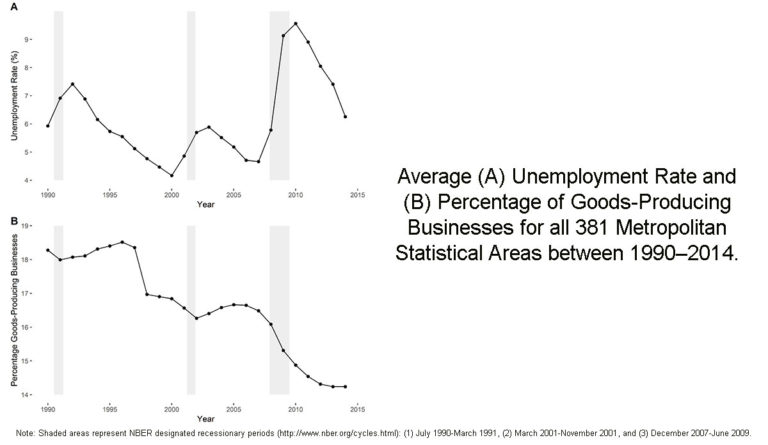Reproductive Recession
Structural changes in the labor market may have a greater influence on childbearing than employment rates and income.

Read Time: 2 minutes
Published:
For the past 60 years, fertility rates in the US have steadily decreased. Research suggests that financial uncertainty due to income and unemployment primarily determines the decision to have children. People usually have children in times of economic prosperity and avoid expanding their families during financial insecurity.
The 2008 recession threatened financial security for families, stealing 8.8 million jobs and inflating unemployment rates to 9.5% in 2009. Unsurprisingly, fertility rates decreased during this period, with the largest drop among Latinx people.
Social scientists anticipated that economic recovery following the 2008 recession would lead to increases in the number of children born. But it didn’t. Childbearing rates hit a record low at 62 births per 1,000 women.
Nathan Seltzer proposes that structural changes in the labor market may have a greater influence on childbearing than employment rates and income. The top figure shows that despite the steady decrease in childbearing rates, US unemployment rates have rose and fallen over time. The bottom figure shows that the percentage of goods-producing services in the US have consistently declined — much like childbearing rates in the US.
Seltzer explains that economic recessions displace workers in middle-wage and goods-producing jobs, which are primarily filled by Latinx workers. When jobs like these are removed, they usually don’t return. Therefore, permanent changes in the labor market following the 2008 recession could have prolonged financial precarity for families. This financial instability may have caused families to postpone childbearing, especially among Latinx people.
Economic recessions can forge permanent economic change. We will see if the Covid-19 pandemic holds implications for childbearing in the US, particularly among communities of color who have been disproportionately affected during the last 18 months.
Databyte via Seltzer N. Beyond the Great Recession: Labor Market Polarization and Ongoing Fertility Decline in the United States. Demography. 2019 Aug;56(4):1463-1493.



